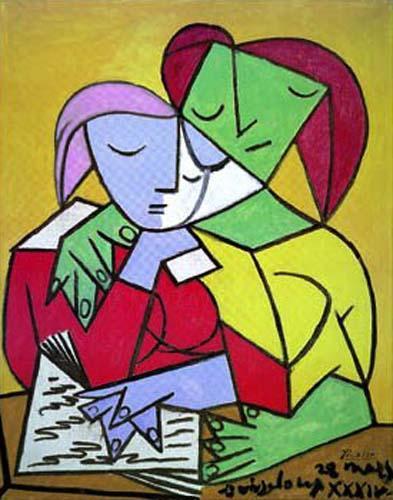
In the world of education, tests are unavoidable. Last week’s post was about using a social story and a teaching aid/study organizer to help with Math word problems in multiple choice tests. This week I use a visual work system with a practice Reading test.
An End-of-Grade Reading test is an assessment used to measure a variety of literacy skills, and by proxy, language communication skills. The study of Literature is sometimes called “Arts and Letters”. Those of us with children who memorize the alphabet easily, or can read fluently by rote, know reading comprehension entails much more than letter and word recognition. Perhaps this is why the study of literature is called an “art”.
How we teach our children with communication disorders necessitates the Art of Individualization. But I can explain how I teach taking multiple choice reading tests. A practice test is a concrete microcosm of teaching opportunities.
I tailored the example of a work system below for my 5th Grade son. He does not have major decoding issues or vision problems, aside from his need for visual organization to process and interpret meaning. Autism has hindered his communication and language development, affecting reading fluency and comprehension.
There are a myriad of ways parents and teachers can help children with autism read and learn, and learn to read. Information on highly effective teaching strategies for students with autism, plus professional and parent trainings are at the TEACCH website. For another child of mine with specific reading problems, I found additional training from the Augustine Project invaluable.
The tools I’m teaching my son to use are easily applied to his End-of-Grade Reading test: scratch paper, a pencil, and a highlighter. Practice with a visual work system begins to teach him a way to read and think about questions asked. The reading test selection is from the North Carolina End-of-Grade sample items.
To observe how my son takes a reading test, I offered a few test selections from which he chose: fiction, a description of an activity with lists, and an informational essay. My son picked the fiction passage because the title includes a food he loves:




 As he read aloud, I observed my son mumbling and not always reading the whole word. He stabbed each word with his index finger in a staccato fashion. I also noticed in his rush to finish, he skipped a line of text. I stopped him by the fourth paragraph to put his first tool in place. Before tests, students are given blank pieces of paper. With a highlighter and a folded piece of paper, we made a reading guide. Although he didn’t slow down, he started to read more fluently every line of text:
As he read aloud, I observed my son mumbling and not always reading the whole word. He stabbed each word with his index finger in a staccato fashion. I also noticed in his rush to finish, he skipped a line of text. I stopped him by the fourth paragraph to put his first tool in place. Before tests, students are given blank pieces of paper. With a highlighter and a folded piece of paper, we made a reading guide. Although he didn’t slow down, he started to read more fluently every line of text:
Upon finishing the reading, my son dove into answering the questions and never referred back to the text again. He tended to answer a question before reading all the answer choices. He scored 50%. I knew he could score higher with simple guidelines. Here’s what I made:
Use the strategies above as a springboard for ways to think creatively about visually helping your child or your student. My goal is to improve my children’s communication and language. If my children can read and understand, I believe their potential for learning is limitless!
Tags: Alison Davis, Augustine Project, Autism Society of North Carolina, momof3au, Reading test strategies for students with autism, TEACCH




As always, you are offering sound, thoughtful advice that is applicable to any struggling reader. Thanks for the shout out to Augustine training!
Using the test to teach rather than, the typical non-functional teaching to the test!